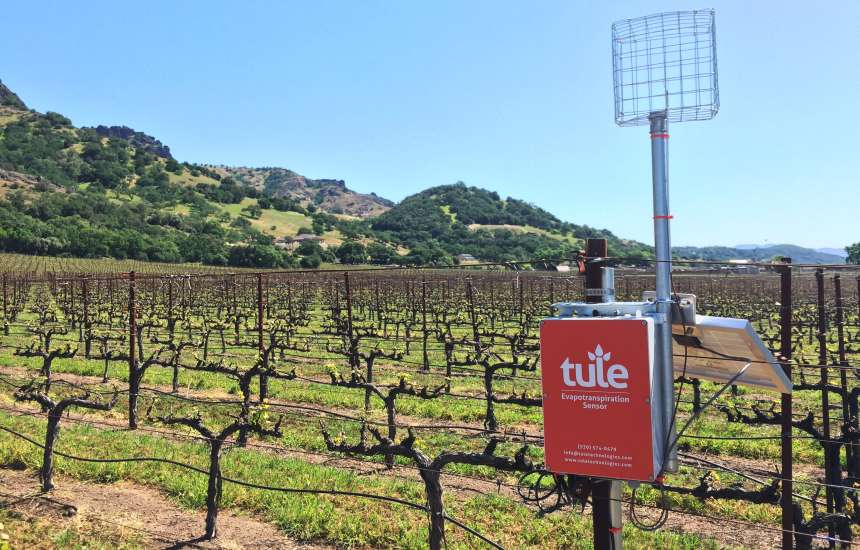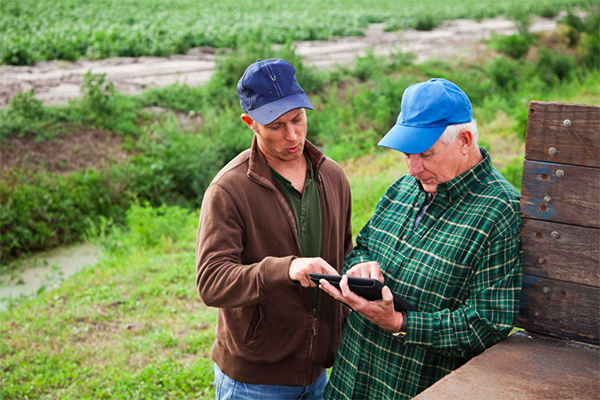Tule Technologies: Monitoring Water Stress Can Unlock Potential

Tule Technologies’ Evapotranspiration (ET) Sensor equipment is helping many California growers with their daily irrigation decisions.
Although we mostly stick to the things we know around these parts (corn and beans), we’ve strayed from the traditional CropLife® subject matter from time to time if we felt it was something cool enough to pique your interest. Last year, we wrote about the PlantBeat growth monitoring sensors that had yet to make it into Midwestern crop fields but seemed like a cool concept that perhaps one day could grace the Corn Belt.
Tule Technologies Inc., an irrigation software and hardware startup founded in 2014 in that hotbed of startup activity (San Francisco, CA), is another one of those cases. The six employee company dubs itself “a grower’s 24/7 Automated Irrigation Advisor,” and endeavors to make irrigation management decisions easier for growers by telling them exactly how much water to put on each day.
How Tule accomplishes this feat is pretty intriguing.
Tule’s Evapotranspiration (ET) probes are set up in each field and record real-time data — the probes measure how much water vapor the wind is carrying away from the crop (i.e., irrigation losses), as well as soil moisture in the area surrounding each probe — then transfers that data to Tule’s cloud servers, where the data is processed and an irrigation recommendation is generated and pushed out one of three ways — the dedicated iOS/Android mobile app, daily email reports, or via a Web-based user account. Typically, a ET probe can monitor from one to 10 acres.
Already working with some of the largest almond growers in its home state of California, as well as other crops such as tomatoes and wine grapes, CEO and Co-Founder Tom Shapland, Ph.D., says the company is currently working on optimizing the system before looking at moving into other row crops.
“What we’re doing is taking an actual ET measurement around the crop canopy to arrive at the actual stress level of the field itself, and the grower can decide off our recommendation how much water to put on (via irrigation),” says Shapland, who when we talked was in the midst of moving Tule Technologies headquarters across the Bay Area to Oakland.
“That’s the real innovation here; that we can measure how much water is actually being used by a one- to 10-acre field,” he says.
It all starts, according to Shapland, with thinking about how growers make irrigation decisions.
“Most guys are asking themselves two questions every single morning when they first wake up, how stressed is my crop and how much do I irrigate?” he explains. “And they want that info in a simple format that tells them which fields to irrigate, how much to put on and when. Most don’t want to have to parse through all that data in order to make that decision, so that’s where Tule comes in.”
Two custom metrics are central to what Tule does. FieldStat, which assigns a percentage to plant stress level that falls in one of four categories, from low stress (75% or higher) to extreme stress (50% or below), and Target Plant Response Index (PRI), which is a percentage that increases as crop canopy reaches full size.
“We’re giving growers the ability to say ‘Okay, here are the fields that I need to pay attention to today, here are the ones I need to drive to and make sure everything is in order; those other fields, I don’t necessarily need to drive there today, everything’s going fine,’” Shapland explains. “That has helped them manage their time and it’s one thing that growers have liked about working with us.”
And while most corn and soybean guys would most likely prefer avoiding any plant stress until harvest dry down time, some of California’s highest value crops need a shock of stress at some point in their development.
“Most of our crops here in California have a window in their crop development cycle where they want some stress, whether it’s to dry things up prior to harvest or for flavor,” says Shapland.






